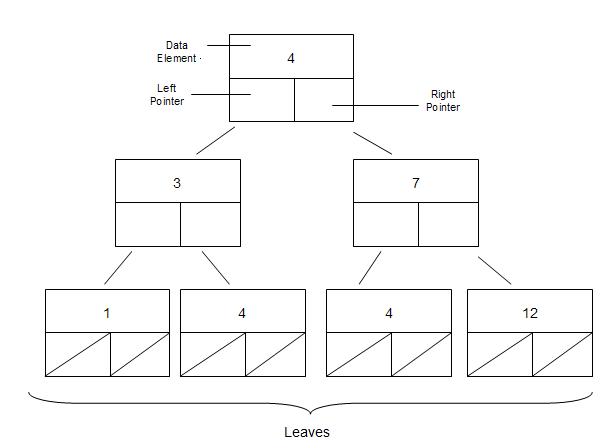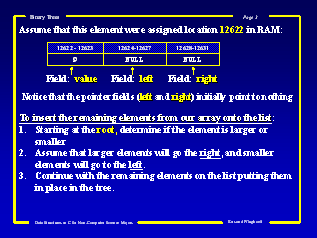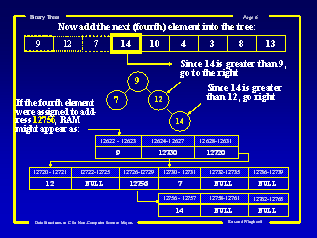What is a binary
tree and why do we use it?


A binary tree is a structure
used to represent hierarchical data through the use of binary search
and link lists. It is composed of nodes, where each node has a data
element, a right pointer and a left pointer These right and left
pointers point to lower sub-trees on each side of the node. The
following diagram represents a binary tree:

There also exists a binary
search tree (such as the one above). This is a type of binary tree
where the nodes have been arranged in an order. The node arrangement
is dependent on the values of the data elements and the left and
right pointers. For each of the nodes, the left sub-tree should have
a value less or equal to the data element value. For the right
sub-tree, the value should be higher than the data element. Other
important terms that should be considered are the leaves and the
internal nodes. The leaves represent the nodes located at the bottom
of the tree, while the internal nodes correspond to every node
between the origin and leaves of the tree.
Problems:

"The major problem lies in the
manner in which we laid out our records. Even if we physically move
the records such that they are ordered in some fashion (i.e, the 1st
record is located before the 2nd, the 2nd before the 3rd, and so
forth) because we can not calculate the base address of any record
on the list (as we can with an array), we must still perform a
sequential in order to locate a record."
As discussed in class, as well as
Professor Kirs' slides this is how we set up a binary tree!!!
"Constructing a binary tree is
relatively simple, but constructing a "good" tree (we will see
examples of good trees versus bad trees later) is often difficult.
The manner in which we established our tree was perhaps the simplest
way (although we admit that we "rigged" the order in which they were
placed in the unordered list). We took the first element in the
list and established it as the root. We then took each of the
remaining elements (in order, we'll add them on two at a time to
save space) and determined where we should put them (smaller values
to the left, larger values to the right)." (Textbook Material)
Step 1.




Terminology:
A tree is a
hierarchical
structure.

In our tree, the numbers are arranged
by magnitude or size. Smaller numbers are to the left and larger
numbers are to the right.
Recurssion
is a programming technique which allows a
function to call itself.
Without
recurssion, traversing (moving about)
binary trees become very difficult.
Leaf
is also referred to as a terminal node.


 CIS3355:
Business Data Structures
CIS3355:
Business Data Structures